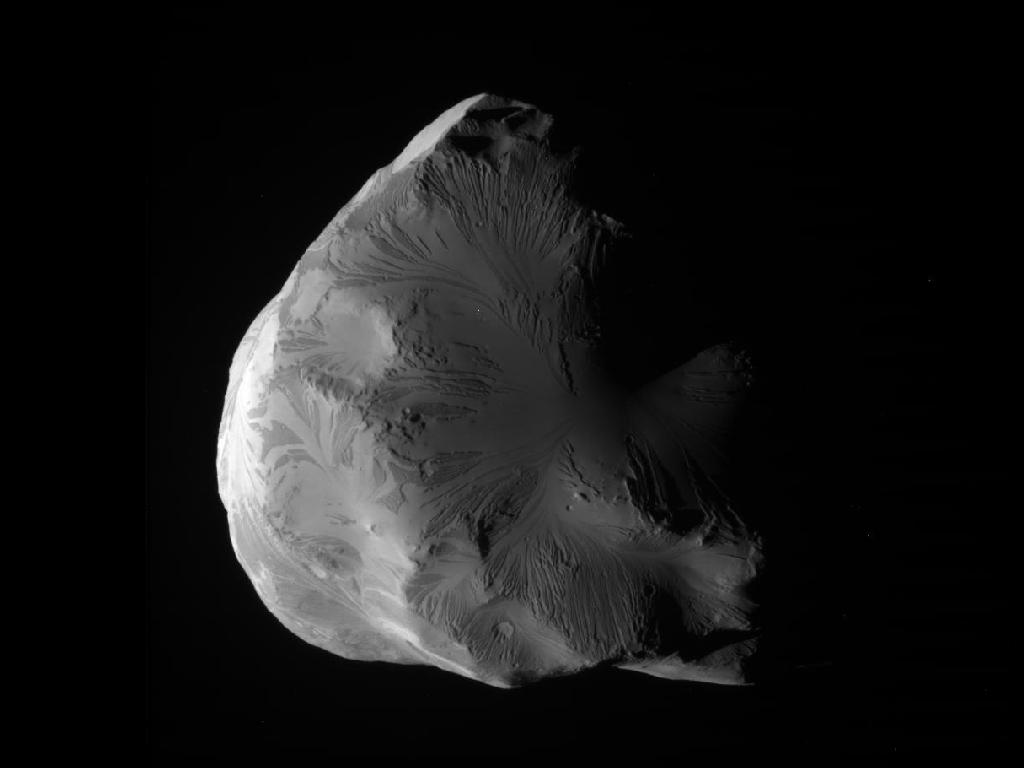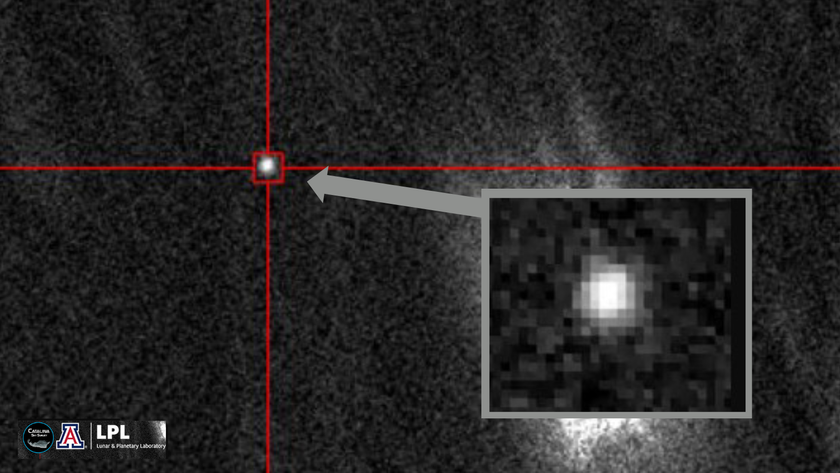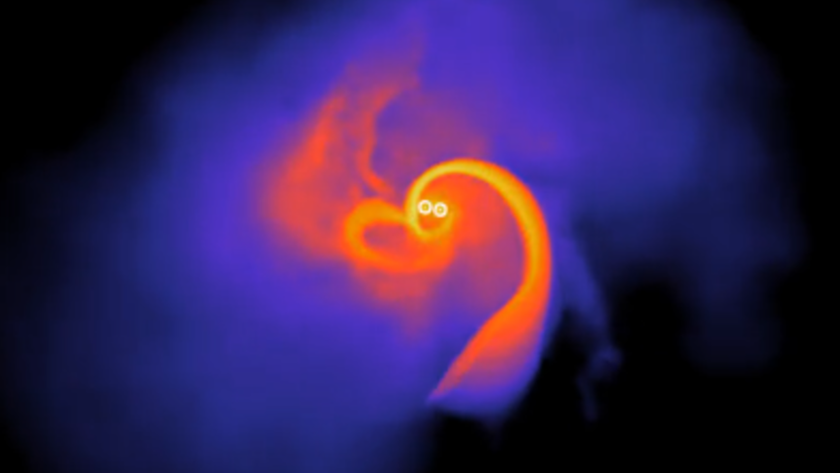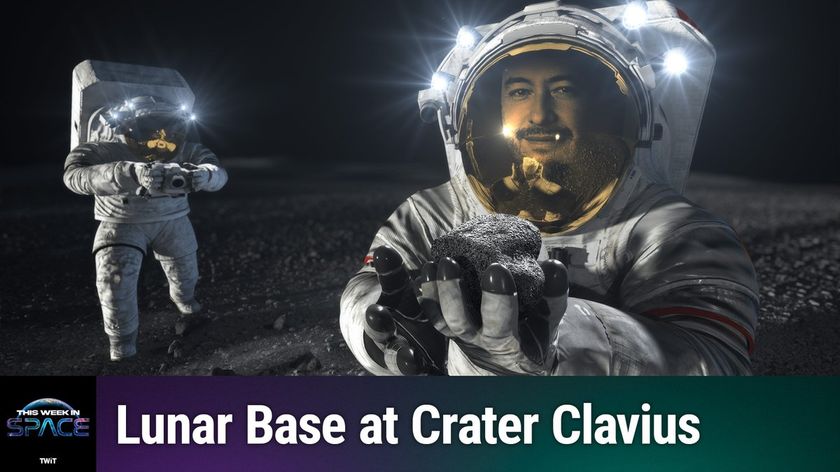
Saturn's small moon Helene shines like a regal ice queen in a dazzling new photo from NASA's Cassini spacecraft .
Cassini photographed the icy Helene on June 18 during a close flyby of the frigid world. At one point, Cassini zoomed to within 4,330 miles (6,968 kilometers) of Helene — the second-closest approach to the moon of the entire mission, researchers said.
Helene is an irregularly shaped world 22 miles (35 kilometers) wide. It orbits Saturn at an average distance of about 234,500 miles (377,000 km), roughly the same distance that separates Earth from our own moon. NASA officials called the moon Saturn's "ice queen" when releasing the new photo. [More Saturn moon and ring photos]
The moon was discovered on March 1, 1980 and is named after the mythical granddaughter of Kronos, the Greek equivalent of the Roman god Saturn, according to a NASA description. It is one of at least 62 moons known to orbit Saturn, though only 53 of these satellites have formal names.
Cassini launched in 1996 and arrived at Saturn in 2004. The mission also carried the European Space Agency's Huygens lander, which touched down on Saturn's moon Titan soon after Cassini arrived in orbit around the ringed planet.
Cassini completed its primary mission to explore Saturn, its rings and moons in 2008. Since then, the mission has been extended twice, most recently to 2017.
You can follow SPACE.com senior writer Mike Wall on Twitter: @michaeldwall. Follow SPACE.com for the latest in space science and exploration news on Twitter @Spacedotcom and on Facebook.
Get the Space.com Newsletter
Breaking space news, the latest updates on rocket launches, skywatching events and more!
Join our Space Forums to keep talking space on the latest missions, night sky and more! And if you have a news tip, correction or comment, let us know at: community@space.com.

Michael Wall is a Senior Space Writer with Space.com and joined the team in 2010. He primarily covers exoplanets, spaceflight and military space, but has been known to dabble in the space art beat. His book about the search for alien life, "Out There," was published on Nov. 13, 2018. Before becoming a science writer, Michael worked as a herpetologist and wildlife biologist. He has a Ph.D. in evolutionary biology from the University of Sydney, Australia, a bachelor's degree from the University of Arizona, and a graduate certificate in science writing from the University of California, Santa Cruz. To find out what his latest project is, you can follow Michael on Twitter.


